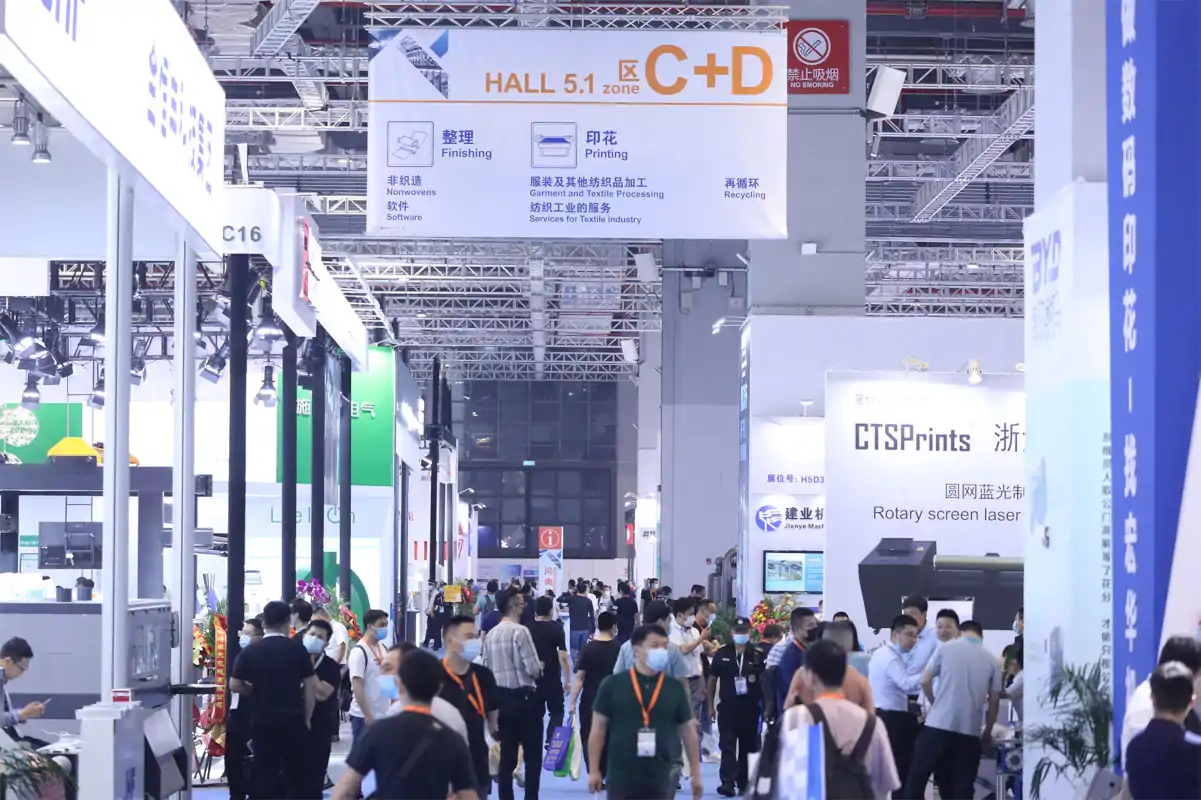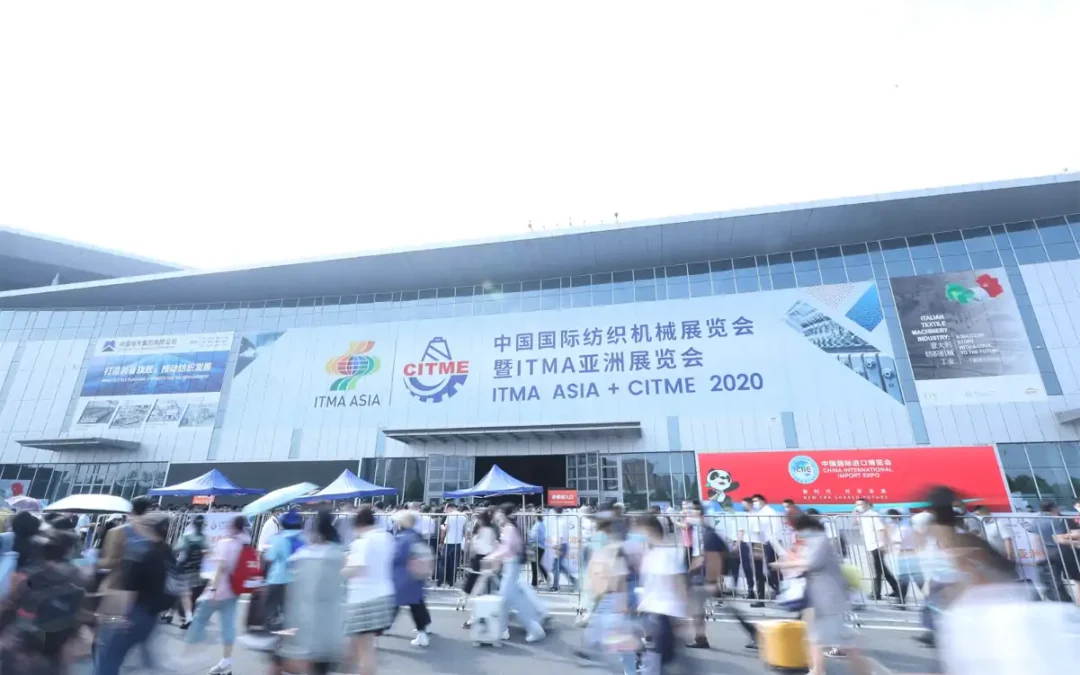The 8th combined exhibition will be held from 20 to 24 November 2022 at the National Exhibition and Convention Center in Shanghai. Located in the chinese crucial market, ITMA Asia + CITME represents a relevant plattform for textile industry companies. The 2020 edition was a special and the first international exhibition since the pandemic started. Remarkably as a result of the efforts of the organizers to guarantee a safe environment for both exhibitors and guests and to energetically manage the event.
ITMA ASIA + CITME 2020 concluded successfully in June 2021 at the National Exhibition and Convention Center in Shanghai.
Covering 160,000 square meters of exhibition space, the 5-day event hosted 1,240 exhibitors from 20 countries and regions, and attracted a visitorship of about 65,000, with the majority of the visitors from China.
Jointly owned by CEMATEX ( The European Committee of Textile Machinery Manufacturers) and China Textile Machinery Association, and held in partnership with the Japan Textile Machinery Association, the biennial ITMA ASIA + CITME exhibition also receives strong endorsement from the Korea Textile Machinery Association, Taiwan Association of Machinery Industry and other major international and regional industry associations. Afterwards 7 successful editions, ITMA ASIA + CITME 2022 is confirmed as the leading-edge business instrument in Asia for textile machinery manufacturers. Bringing them into the booming Asiaticmarket and connecting with updated manufacturing technologies.
The combined showcase is highly appreciated by leading textile machinery industry players, as it offers them a cost-effective platform for their products and services in Asia.
The textile industry and trade in China: a fascinating view through the centuries
With a long history of textile and dyeing technologies, China is the world’s largest clothing producing and exporting country. And it was Shanghai that opened China’s first machine-weaving factory, marking a turning point in the history of the country’s textile industry.
On the south bank of Suzhou Creek, the three-story Shanghai Textile Museum offers people a fun, quick glimpse of the city’s textile culture and achievements over the past 6,000 years.
Linen and silk were the main fabrics in China for thousands of years until cotton farming and spinning were introduced during the Song Dynasty (AD 960-1279). Shanghai started to import cotton during the Yuan Dynasty (1271-1368), but it was during the prosperous Ming Dynasty (1368-1644) that people mastered cotton spinning and weaving.
Influenced by the Industrial Revolution from the mid-1700s to the early 1800s toward the end of the Qing Dynasty (1644-1911), the Shanghai Machinery Weaving Bureau was set up in 1890 by Li Hongzhang (1823-1901), a high-ranking official, pioneering a new era for China’s modern textile industry.
A set of hardwood tables and chairs on display, valued at a staggering 300 million yuan (US$43.6 million), is said to have seated Li and national leaders such as late Chairman Mao Zedong and former Premier Zhou Enlai.
A large number of cotton factories were set up along Suzhou Creek and on the Bund around the 1900s, which gave a great boost to the industry’s development.
The mills were located next to the creek because the cotton and other goods and materials were highly combustible.
Shanghai soon became China’s capital of fashion, too, with people dressed in chic clothes.

ITMA ASIA 2022 – Shanghai, China’s vibrant commercial Capital
Today, Shanghai’s textile industry focuses on high-technology and new materials development, becoming a major supplier in almost every industry.
Its products and components can be admired everywhere, from high-speed trains to the space suits worn by China’s astronauts, the roof of the Water Cube in Beijing, the domestic aircraft manufacturing industry and the artificial kidney.
In 2021, the real gross domestic product (GDP) of Shanghai municipality in China increased by around 8.1 percent from the previous year. Shanghai is the most populous city in China with the largest GDP.
Located in Eastern China on the southern estuary at the mouth of the Yangtze river represent a vibrant bridgehead to global markets and calls on market opening, Shanghai experienced a decades-long economic boom, which massively changed the shape of the city. Economic growth rates had double digits for more than two decades since 1992 and were well above the Chinese national average.
China: The key destination for italian textile machinery industry
Asia remains the crucial selection for Italian manufacturers in the textile sector. The 2020 period registered 38% of Italian textile machinery exports in the Asian market. The Asian market prospect continues to be positive after the pandemic and its economic consequences.
China has never stopped investments in the textile sector and partnerships with Italian companies.
Textape is embracing the opportunities on the Chinese market by exporting its cutting-edge technology applied to roller coverings. Expecting surprising results in post fair sails and trade with the amazing support of its staff at this edition.


